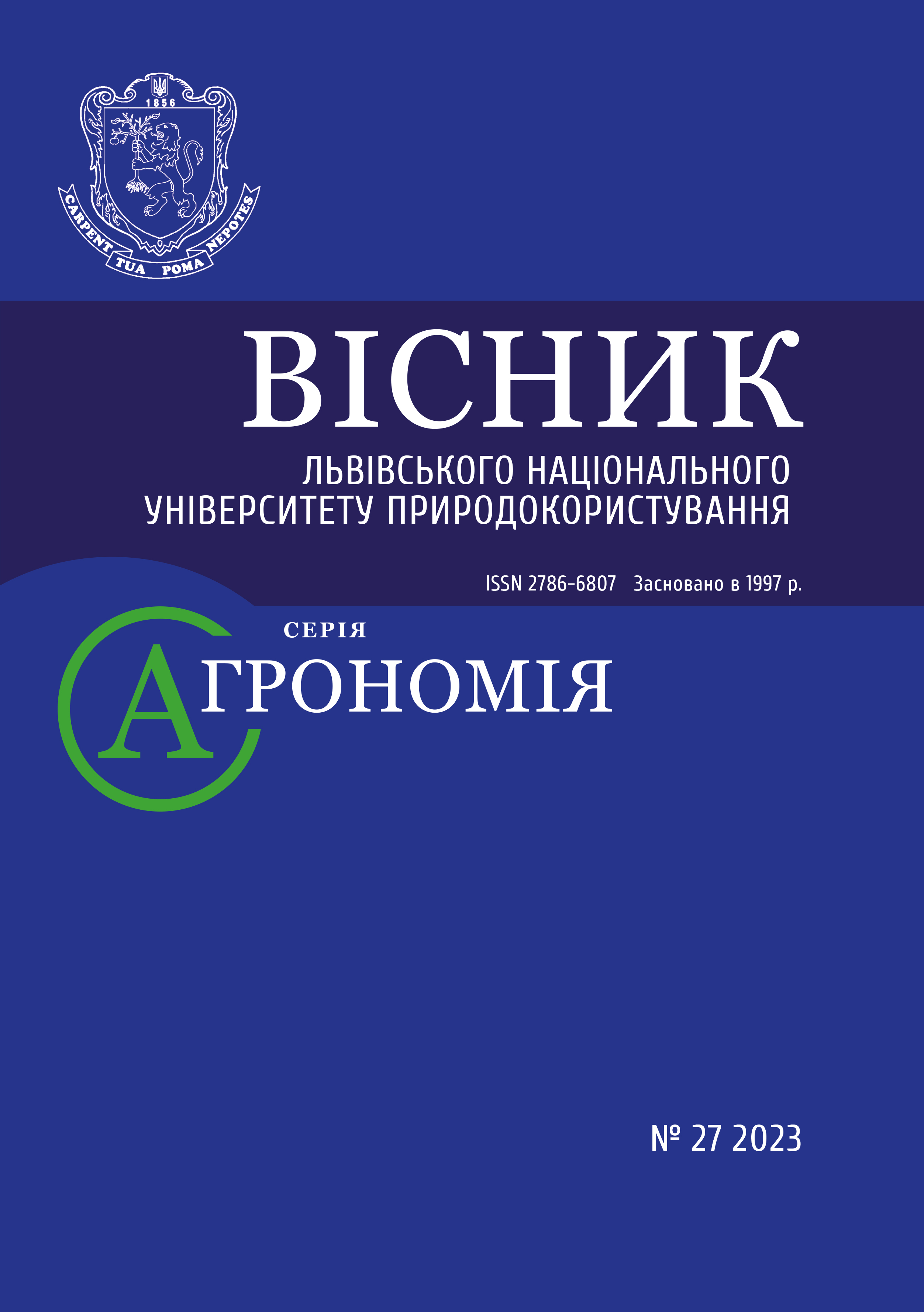PODILLIA’S BROWN SOILS, DESCRIBED BY PROFESSOR H. ANDRUSHCHENKO
DOI:
https://doi.org/10.31734/agronomy2023.27.146Keywords:
gray podzolized soils, brown soils, instructionsAbstract
In the 50s and 60s of the last century, a great event happened in the practical soil science. A comprehensive mapping of all soils of Ukraine that were used in agricultural production in every collective and state farm was carried out. To carry out this work, agronomists from local and state institutions took 2–5 month courses of training, and students of agronomic specialties from agricultural educational institutions were involved. The necessary preparatory work was not fully carried out. In particular, there were no detailed materials on the nature and characteristics of the soil-forming rocks. P. Zamorii's fundamental work on the soil-forming rocks of Ukraine, which clearly confirmed absence of forest on a large area in the south of Ternopil, Khmelnytskyi, and Vinnytsia regions, was published almost after the large-scale soil survey was completed. At that time, domestic soil science had a “single correct” theory of soil origin. Thus, the soil scientist had to name the soil based on the options provided by the instructions. That's how gray podzolized soils appeared on soil maps, even though they were not the ones. A fractional analysis of humus showed that the humus of such soils, even those formed on limestone eluvium, actually lacked the 11th fraction of humus acids, which was bound to calcium.
The lack of affinity to calcium in certain soils is both of theoretical and great practical importance. Liming such soils does not increase their fertility, but only destroys their structure. The research program anticipated the possibility of such inconsistencies. To resolve such issues, it was planned to positions of soil scientists at the research stations. However, soil scientists from the research stations were soon transferred to the staff of regional divisions of the Institute of Land Management, which were actually production rather than research institutions. Today, training of soil scientists in the country has been totally stopped.
References
Andrushchenko H. A. Soils of the western regions of the Ukrainian SSR. Part 1. 184 p.
Dokuchaev V. V. Nizhny Novgorod works. Moscow-Leningrad: Izdatelstvo AN USSR, 1950. 664 p.
Dokuchaev V. V. Selected works. Moscow: Selkhozizdat, 1954. 708 p.
Field determinant of soils / edited by N. I. Polupan, B. S. Nosko, V. P. Kuzmichev. Kyiv: Urozhay, 1981. 320 p.
Instruction and methodical instructions for the survey of soils of collective and state farms of the Ukrainian SSR, 1957. 371 p.
Krupenikov I. A. History of soil science. Moscow: Nauka, 1981. 327 p.
Lurie Y. Y. Handbook of analytical chemistry. Moscow: Khimiya, 1971. 456 p.
Methods of large-scale research of soils of collective and state farms of the Ukrainian SSR – Kharkiv: State Agricultural Publishing House of the Ukrainian SSR. 1958. 485 p.
Mykhailiuk V. I. Water regime concept of soil formation of Professor Nabokykh O.H. Genesis, geography and ecology of soils. Lviv: Ivan Franko National University, 2015. P. 143–147.
Sarishvili I. F. Theory and practice of liming of red earth and red earth-podzolic soils of humid subtropics of Georgia. Tbilisi: Georgian Agricultural Research Institute, 1957. 267 p.
Soils of the Ukrainian SSR / N. B. Vernander, M. M. Godlin, G. N. Sambur, S. A. Skorina. Kharkiv: Gosselkhozizdat, 1951. 326 p.
Zamorii P. K. Quaternary deposits of the Ukrainian SSR. Kyiv: Kyiv University Press, 1961. 550 p.


